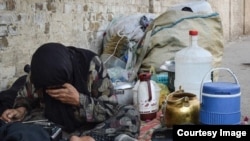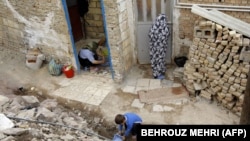Due to the economic failure of the Iranian regime, its people have become increasingly poorer over the past 40 years. According to official statistics, one-third of Iranians currently live below the poverty line. This situation has led to the emergence of some horrible phenomena, writes Majid Mohammadi, an Iranian sociologist, in an op-ed for Radio Farda.
Although estimates of poverty levels in Iran range from 30 percent to 40 percent, this writer believes close to two-thirds of the Iranian population lives below the poverty line.
Among this huge chunk of the population, about 12-15 million face absolute poverty and the rest, relative poverty.
According to unofficial figures, the unemployment rate hovers between 25 percent and 30 percent.
Systematic mishandling of national resources, widespread corruption, allocation of billions of dollars for military conflicts abroad and low foreign investment due to the anti-Western policies of the regime, are among the reasons Iran has become increasingly poorer over the past four decades.
Neither the government nor the extremely rich entities under the control of Supreme Leader Ayatollah Ali Khamenei -- including the Islamic Revolutionary Guard Corps, which has created an economic empire -- report exactly how they spend their budgets and revenues.
Iranians feel the consequences of mismanagement on a daily basis: They are heavily restricted from engaging in economic initiatives, and their living standard is in a freefall. This situation has led to the emergence of several horrible phenomena.
City streets, particularly in Tehran, are full of advertisements for human organs. In addition to kidneys, people in need of money sell their liver, bone marrow, and corneas on the market, and women increasingly agree to become surrogate mothers in exchange for payment. Some of the rich in Iran who have acquired their wealth through unfair privileges use the bodies of the poor to live longer and happier.
According to some reports, between 11 million and 21 million people in Iran live in slums, deprived of minimum health and public services.
In recent years, the number of treasure hunters has significantly increased. Rumors about the discovery of precious finds circulate on Iranian social media on a daily basis. In one case, it was reported that a huge trove from the era of Cyrus the Great was found. Even though the authorities immediately denounced the report as false, people were reportedly still seeking the treasure even days later.
Systematic mishandling of national resources, widespread corruption, allocation of billions of dollars for military conflicts abroad and low foreign investment due to the anti-Western policies of the regime, are among the reasons Iran has become increasingly poorer over the past four decades.
Not a day goes by without reports of violent actions by municipality agents against street vendors. Iranian cities generally do not give street vendors permits, so their work is technically illegal. But due to high unemployment, many people still decide to try their luck on the busy streets by selling food, clothes, or other wares. Municipalities consider this type of business an “interruption of public life” and take drastic measures to stop them. Their agents physically attack street vendors and damage or confiscate their goods. Dozens of videos published on social media document these tragic incidents.
According to Iran's Civic Registration Office, in 2015 more than 37,000 girls under the age of 15 got married. The marriages happen mostly in rural areas and because of the poverty of parents. More than 90 percent of such marriages are arranged, and 75 percent of the minor brides cannot continue their education.
Based on unofficial estimates, there are between 2 million and 7 million child workers in Iran who are not only deprived of a normal childhood experience but are also exposed to violence and other types of abuse.
Seventy percent of Iranians do not consume enough protein. Eighty-eight percent do not eat sufficient amount of fruits and vegetables. The consumption of dairy products is also way below the amount recommended by health specialists. In fact, two-thirds of the population cannot afford to buy healthy food. Therefore, the demand for cheap, unhealthy fast food is rapidly on the rise.
When would this slide into more poverty be stopped. No one even dares to predict. Would higher oil prices help improve the situation?
In the eight years of Mahmoud Ahmadinejad's presidency, the oil price was much higher, almost double of today and the economy still failed to produce real jobs and boost living standards.






